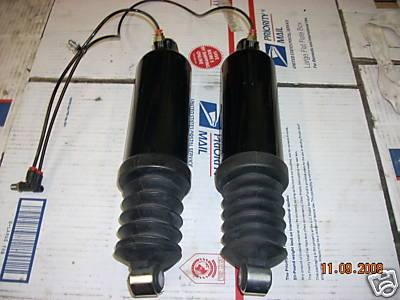
Air shock absorbers use a compressed air membrane to give more lift or dampening ability to an automobile's suspension. Adding air shocks can increase the stiffness and towing capability of a vehicle, but they should be used and maintained properly.
Check the pressure of the air shocks after installation, and routinely over their lifespan. The shocks may have one or two standardized air valves placed at convenient locations. One valve systems will lift both shocks equally, while two valves will compress each shock individually.
Inflate the shocks, if necessary. Typical air shock absorbers will operate properly between 30 and 70 PSI. It is not recommended to use the shocks under 30 or over 100 PSI, as damage to the internal air bag could result. Once both shocks are pressurized to an equilibrium, place valve caps onto the exposed valves. This will prevent the caps from becoming clogged with debris or rusting.
Adjust the pressure of both shocks to accommodate changing driving conditions. A lower pressure will give a softer ride over rough terrain, while a higher pressure will increase towing capacity and highway drift.